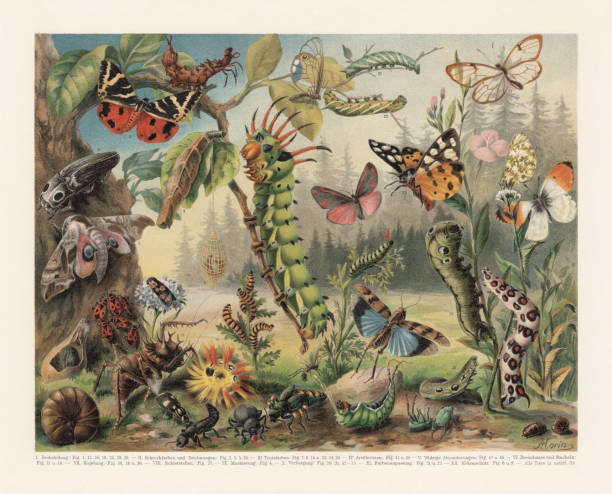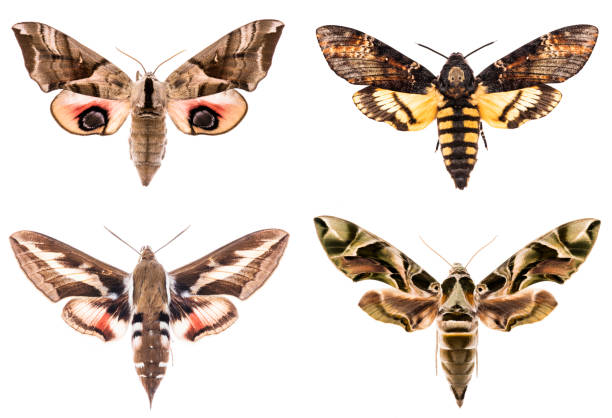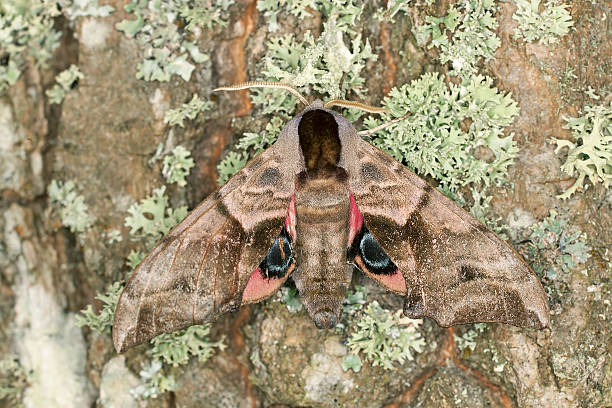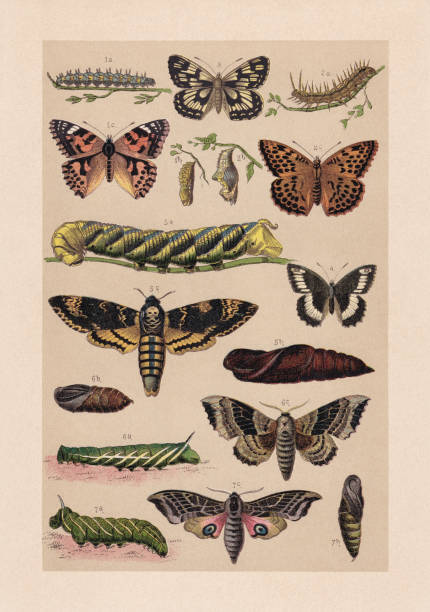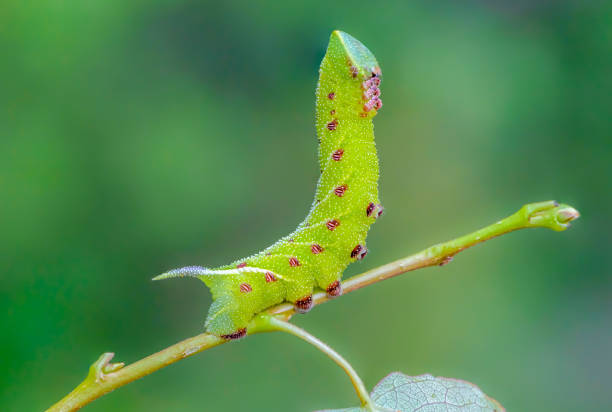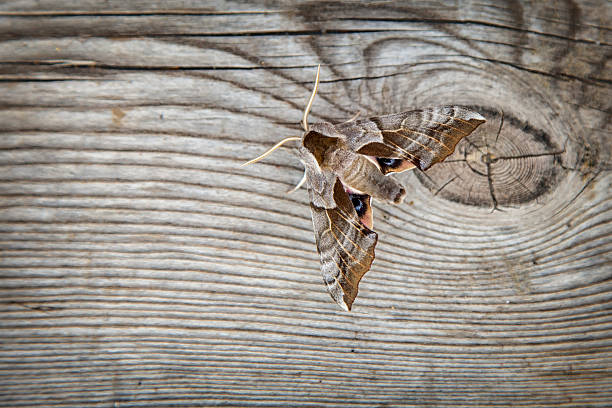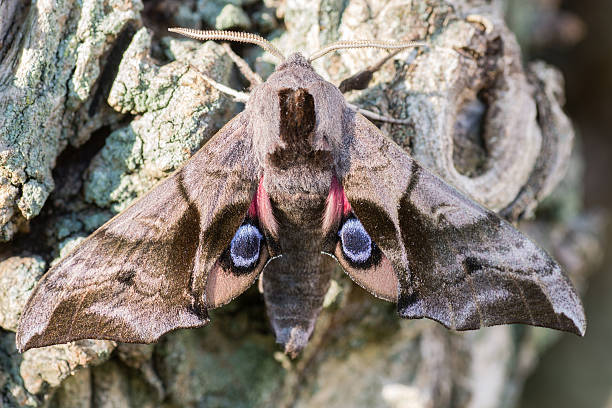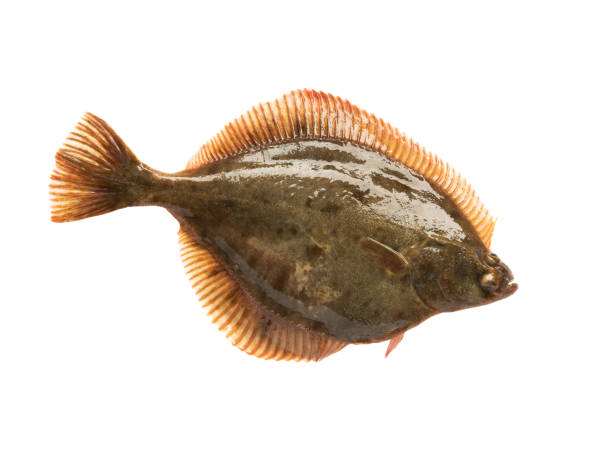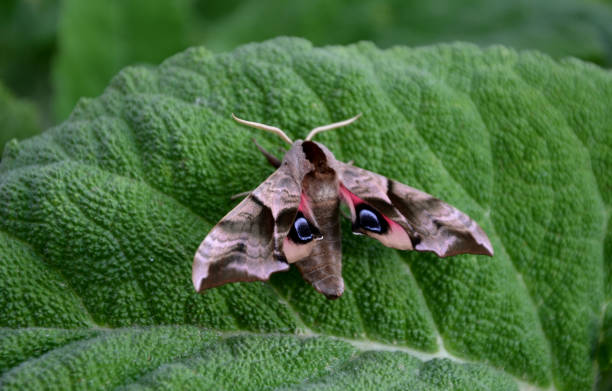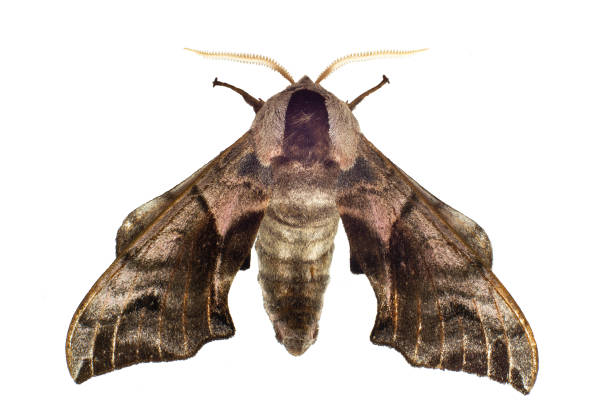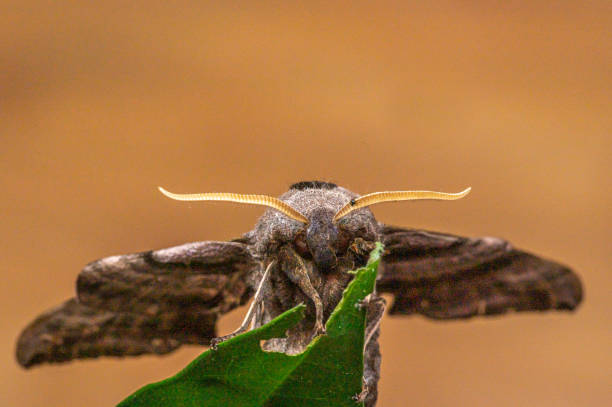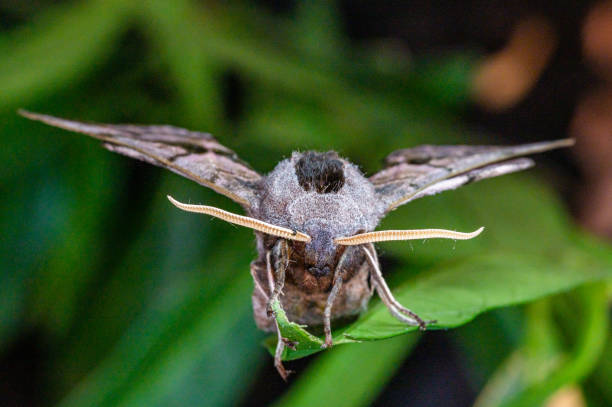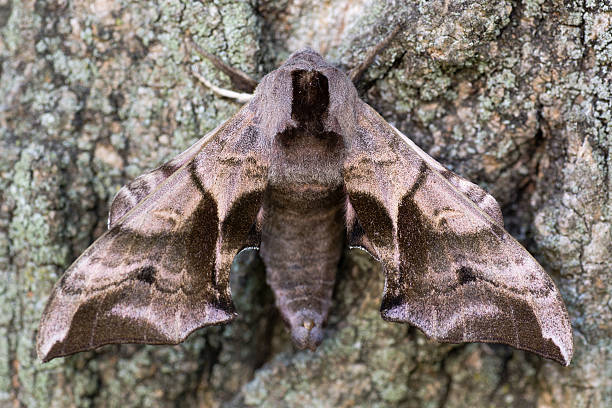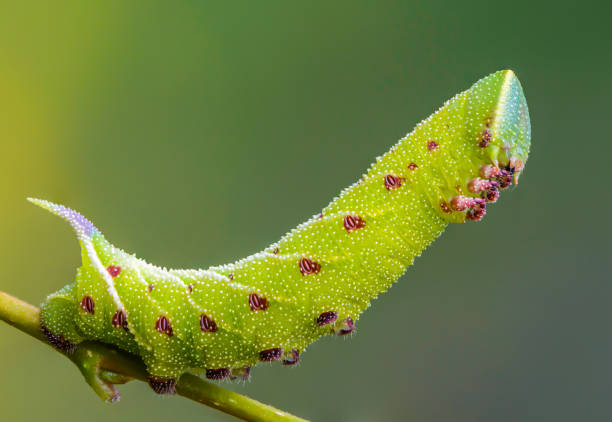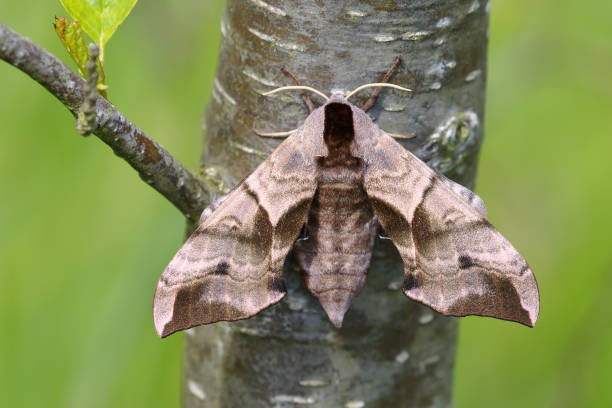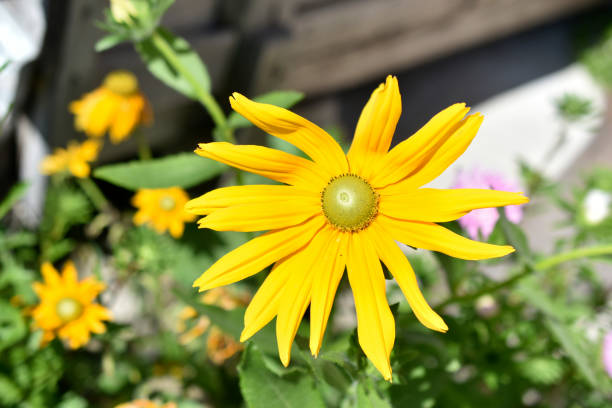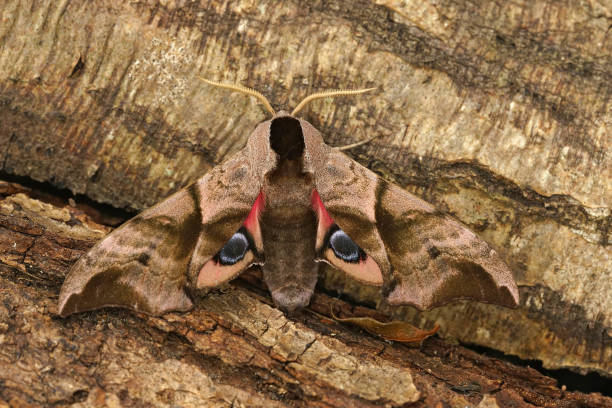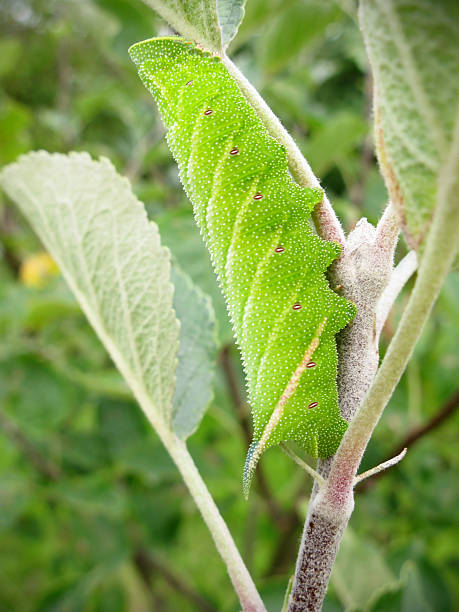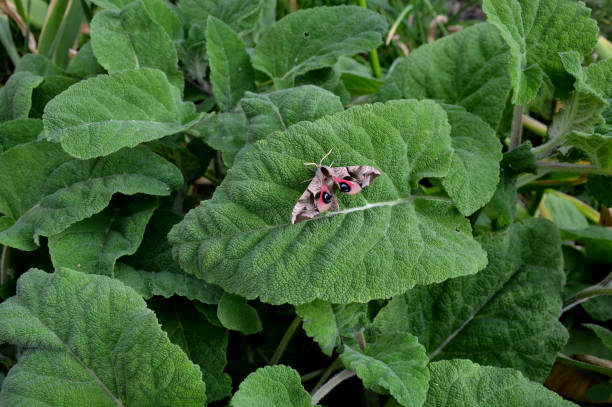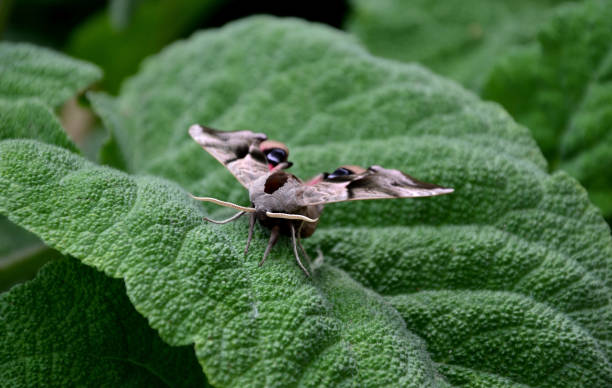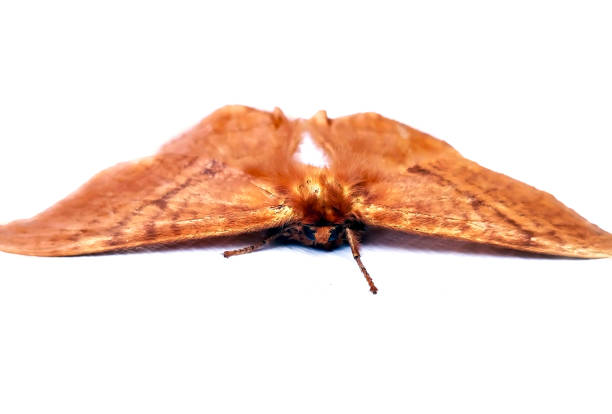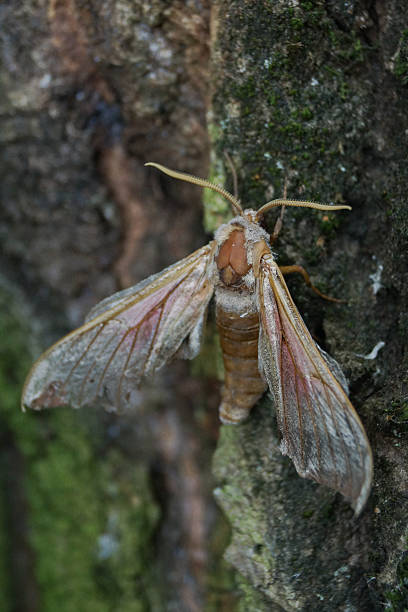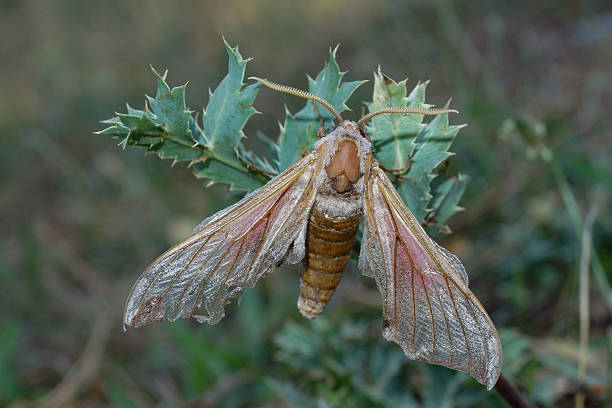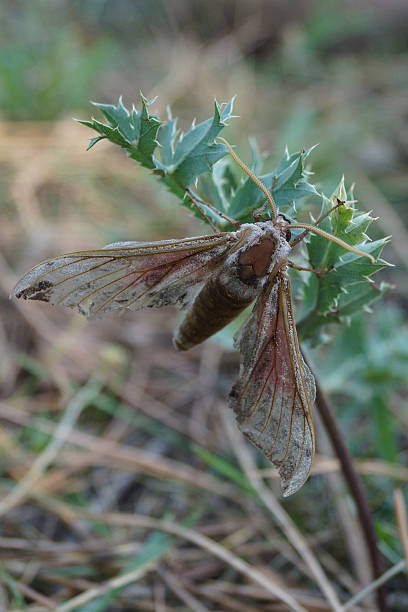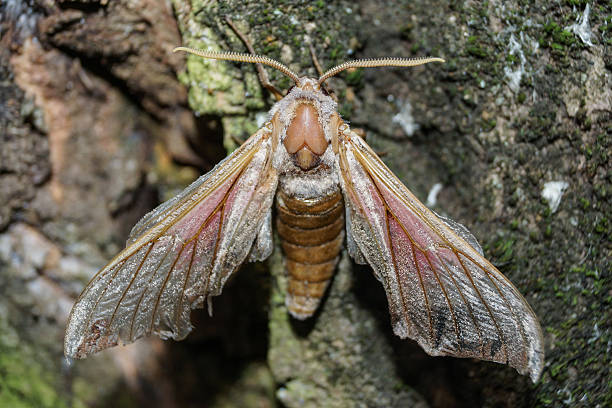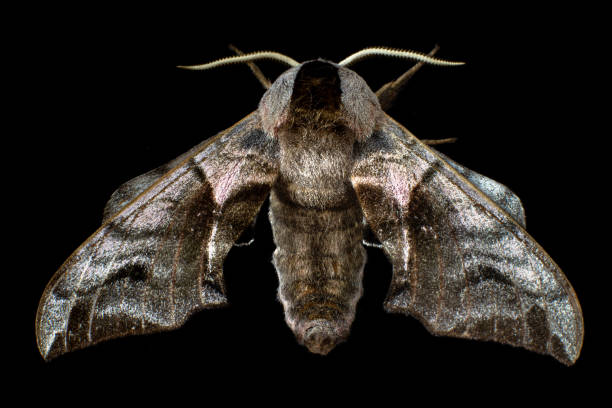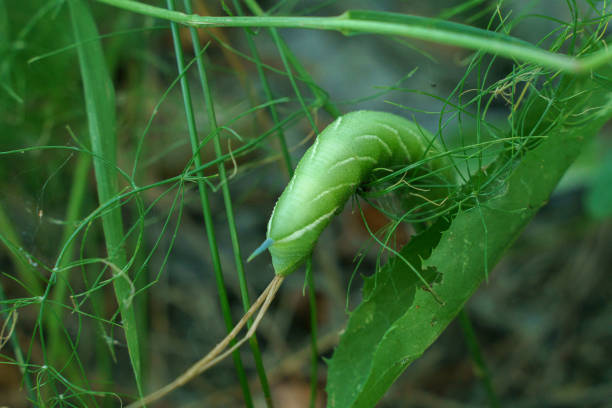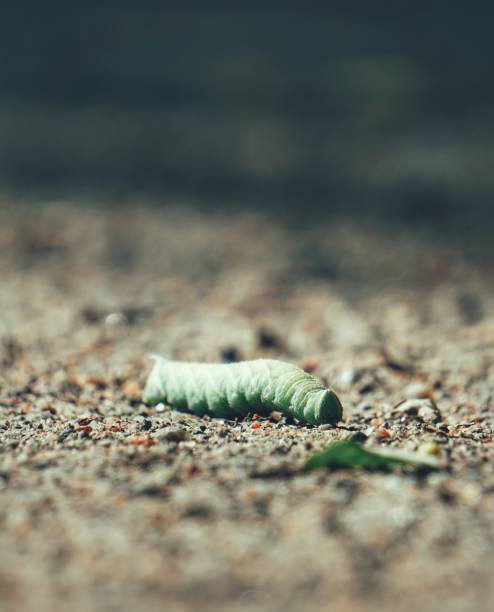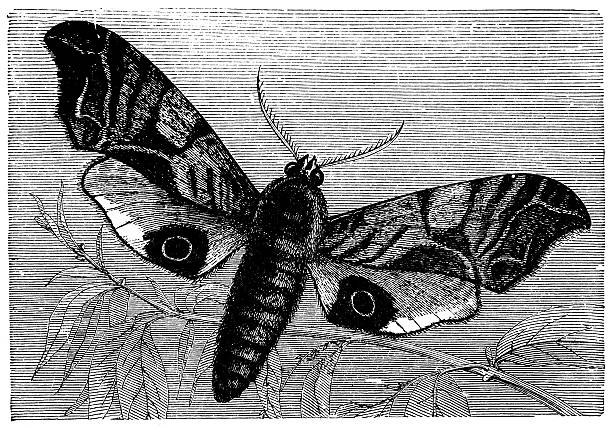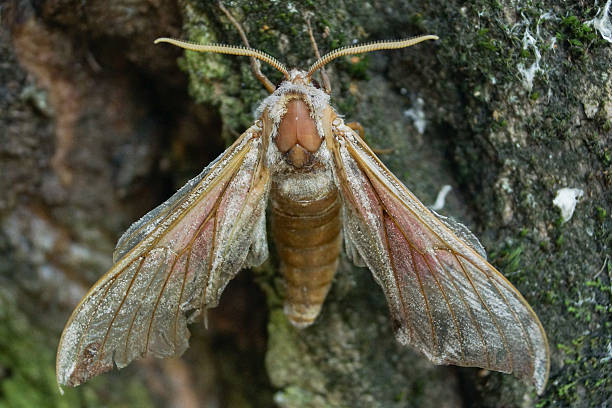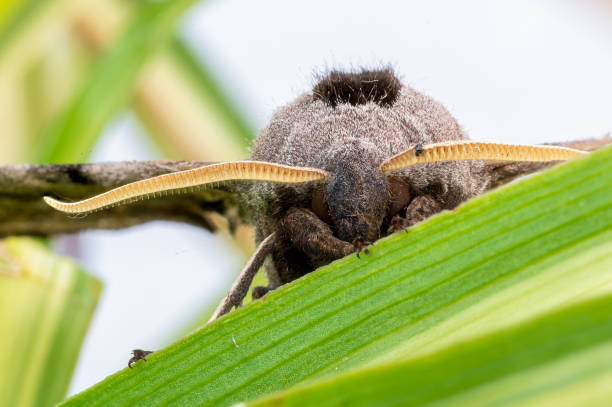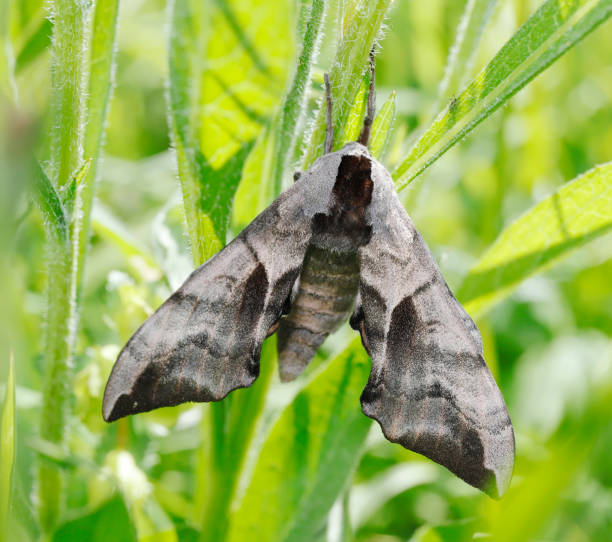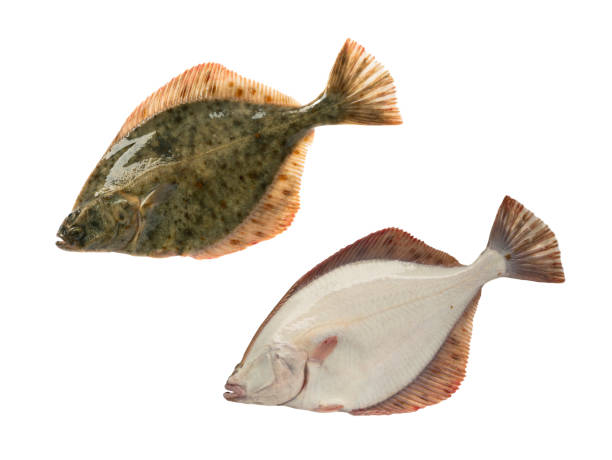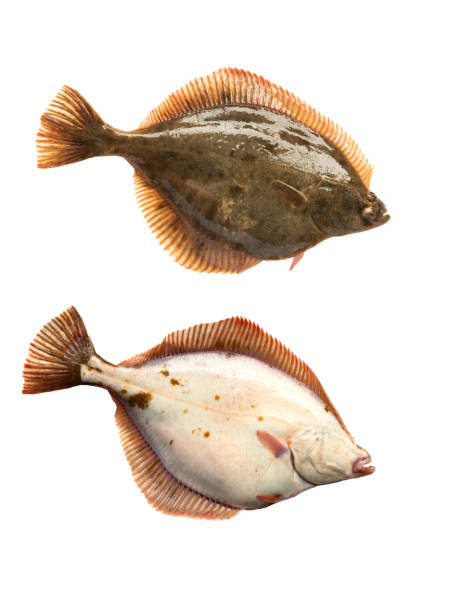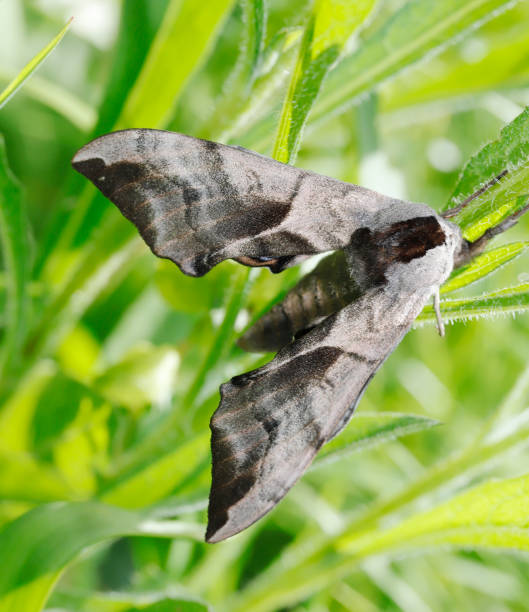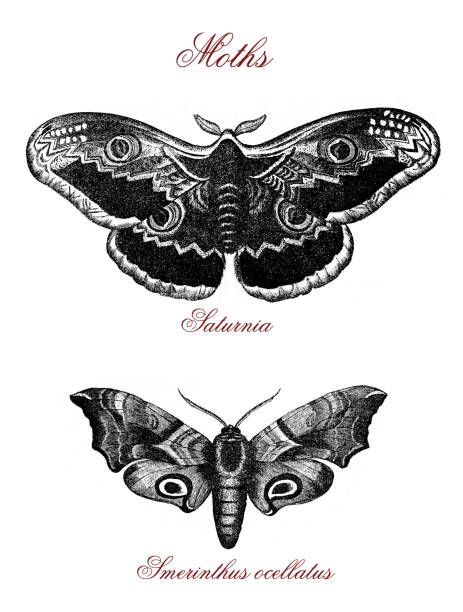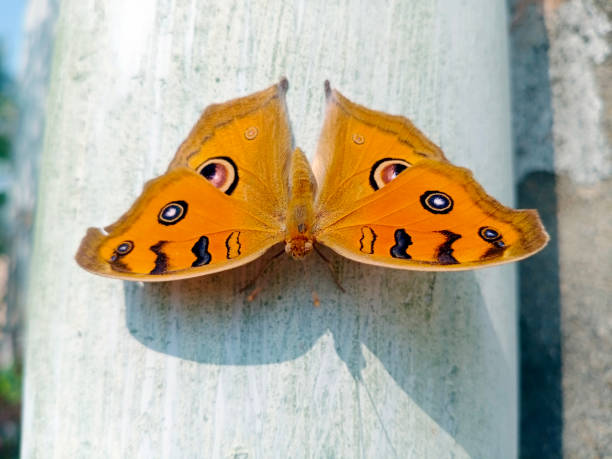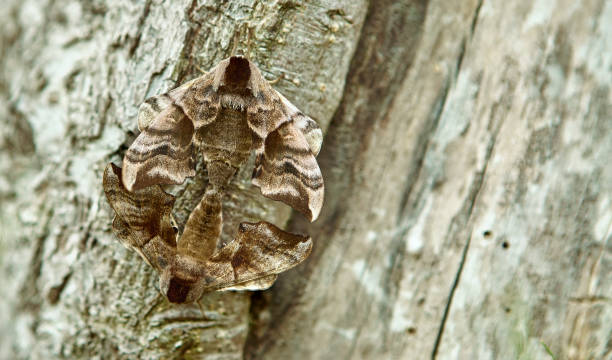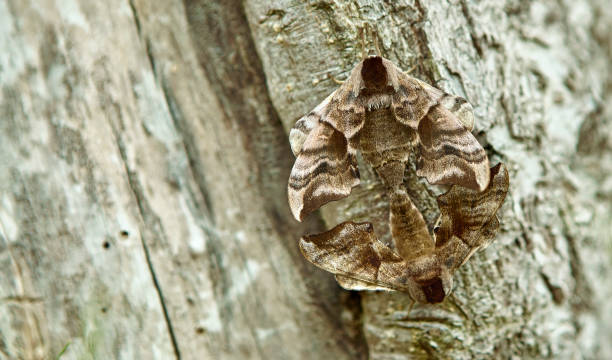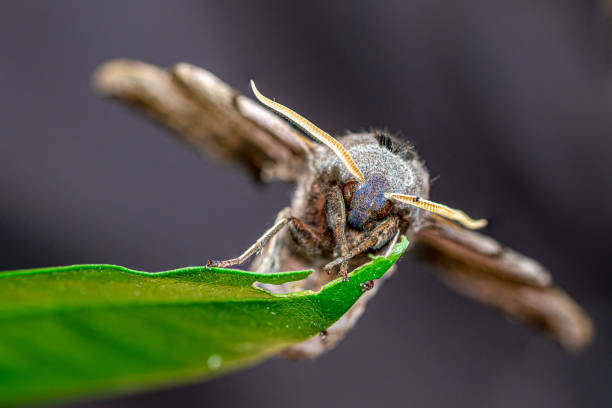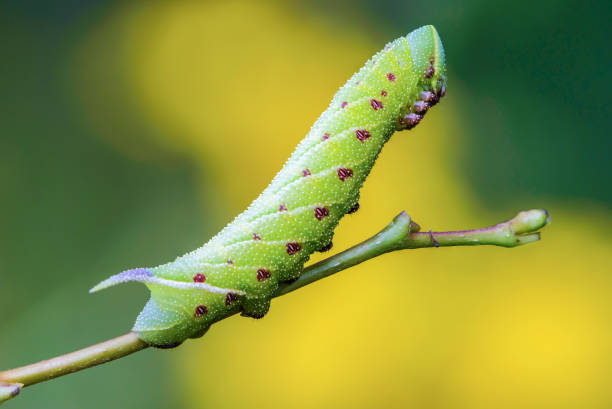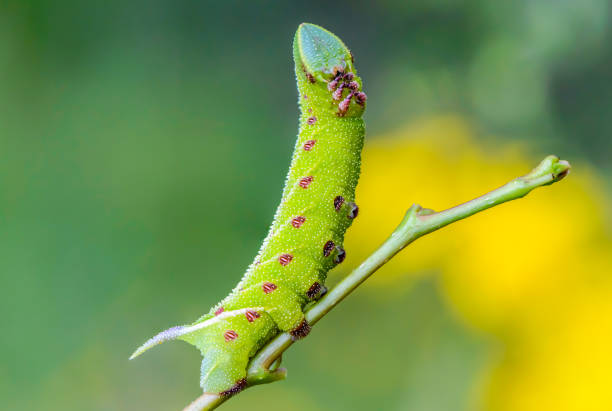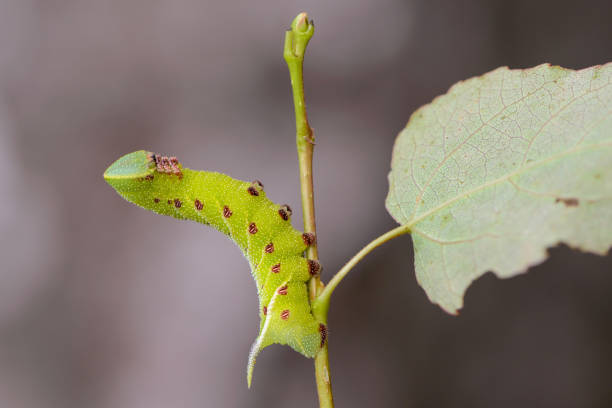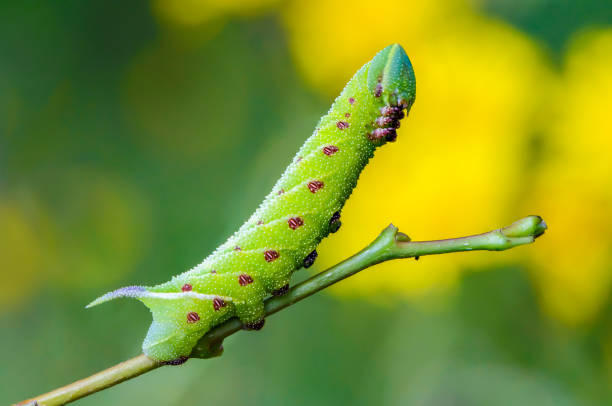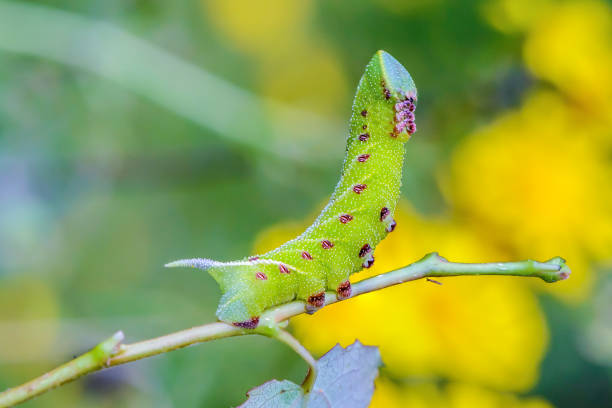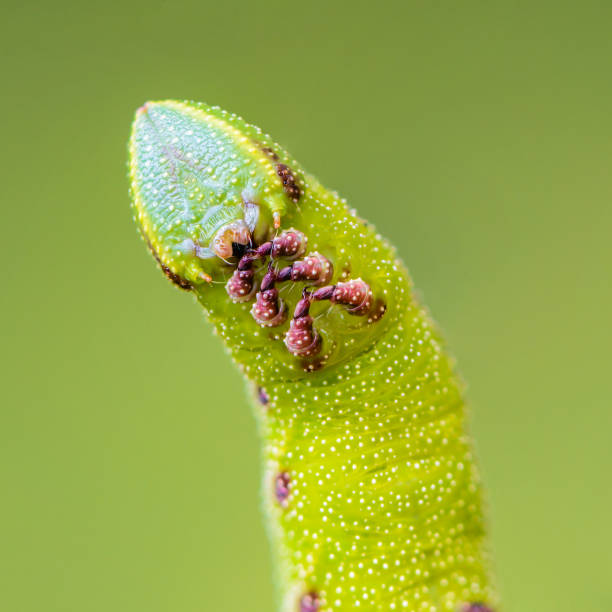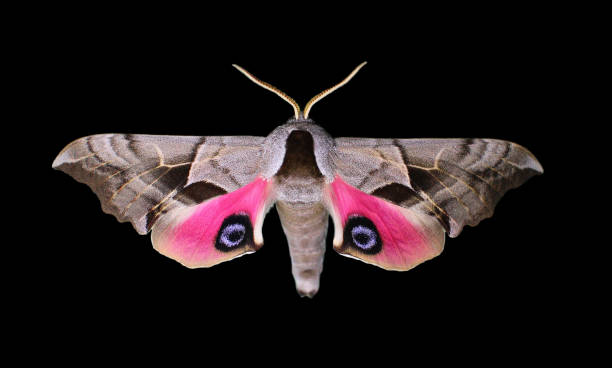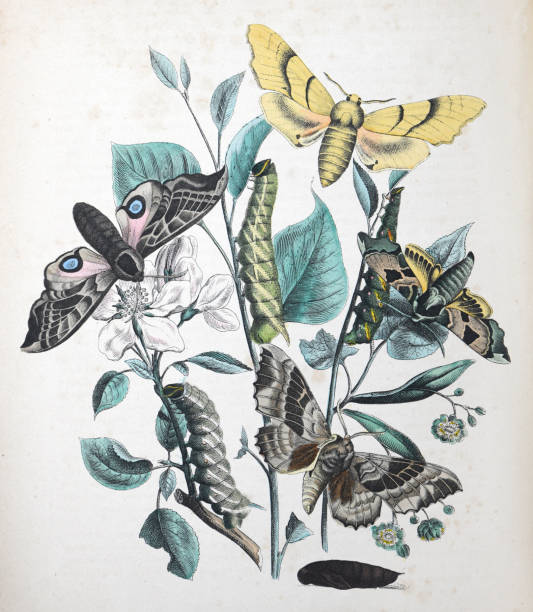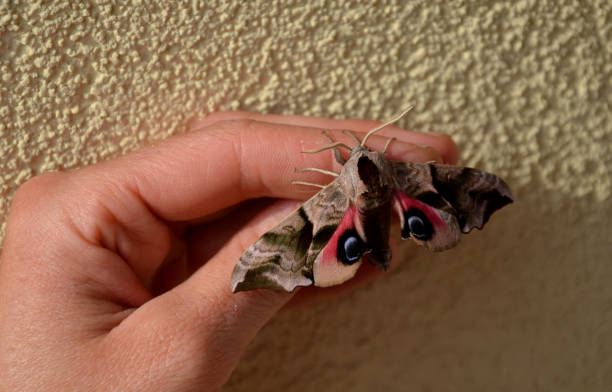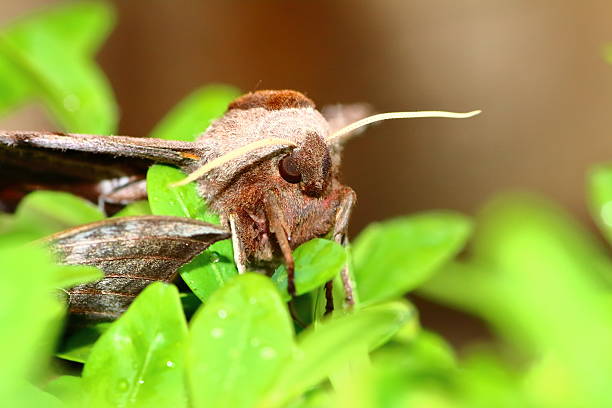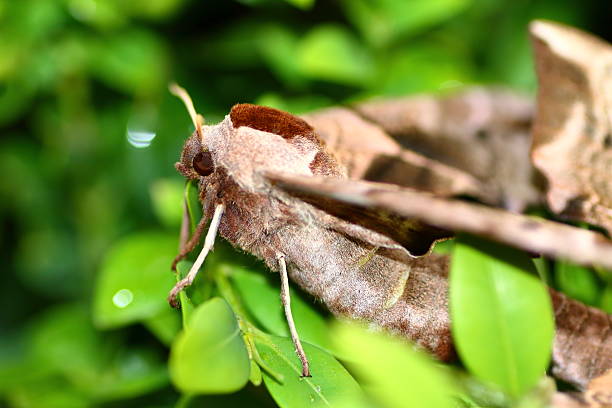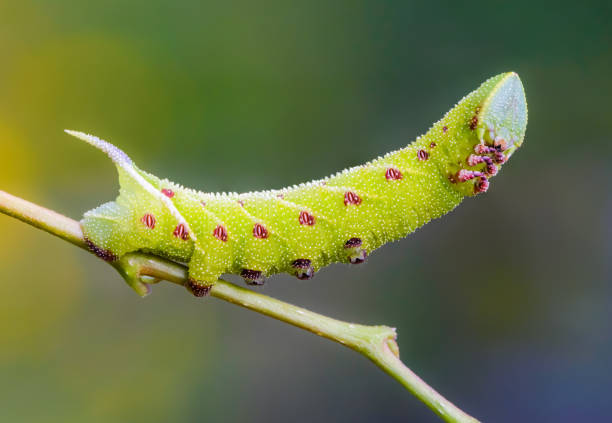
Smerinthus Ocellatus Pictures, Images and Stock Photos
Browse 110+ smerinthus ocellatus stock photos and images available, or start a new search to explore more stock photos and images.

The unusual thick caterpillar of the sphingidae beautifully curved on the branch of the bush.
Female eyed hawk-moth (Smerinthus ocellatus) isolated on white background
Species: 1) Lobster moth (Stauropus fagi); 2) Jersey tiger (Euplagia quadripunctaria); 3) Eastern eyed (Alaus oculatus); 4) Hairy sweep (Canephora hirsuta); 5) Eyed hawk-moth (Smerinthus ocellatus); 6) Brazilian Lithosiide (Silk-worm, Bombycidae, cocoon); 7) Crepuscular burnet (Zygaena carniolica); 8) Firebug (Pyrrhocoris apterus); 9) Small emperor moth (Saturnia pavoniella, cocoon); 10) Sphäroniscus cingulicornis (caterpillar); 11) Megalodon (extinct); 12) Bombardier beetle (Pheropsophus jessoensis); 13) Devil's coach horse beetle (Ocypus olens); 14) Acronicta aceris; 16) Imperial moth (Eacles imperialis, caterpillar); 17) Bloody-nosed Beetle (Timarcha goettingensis); 18) Oil beetle (Meloe variegatus); 19) Puss moth (Cerura vinula, caterpillar); 20) Andromeda satyr (Cithaerias andromeda); 21-22) Eyed hawk-moth (Smerinthus ocellatus, caterpillars); 23) Cream-spot tiger (Arctia villica); 24) Cinnabar moth (Tyria jacobaeae) and caterpillar (15); 25) Swallowtail (Papilio machaon, caterpillar); 26) Blue-winged grasshopper (Oedipoda caerulescens); 27) Hoplia argentea; 28-29) Elephant hawk moth (Deilephila elpenor, caterpillars); 30) Mediterranean hawk-moth (Hyles nicaea, caterpillar); 31) Pteronymia; 32-33) Orange tip (Anthocharis cardamines) and pupae (34-35); 36) Pill millipede (Glomeris limbata). Defence mechanisms of different insects: I) Threat posture: 1, 13, 16, 19, 25, 28, 29. - II) Signal colors and drawings for deterrent: 2, 3, 5, 26. - III) Protection colors (imitation): 7, 8, 15, 23, 24, 30. - IV) Artillerymen: 12, 19. - V) Deterrent secretions: 17, 18. - VI) Defensive hairs and spikes: 11, 14. - VII) Furl: 10, 14, 36. - VIII) To feign death: 27. - IX) Masking: 4. - X) Concealment: 20, 31, 32 - 35. XI) Color timing: 21, 22. - XII) Cocoon protection: 6, 9. Chromolithograph, published in 1897.
Set of four Sphingidae hawk-moths night moths - Smerinthus ocellatus, Daphnis neri, Hyles gallii, Acherontia atropos isolated on white
Eyed Hawk-Moth, Smerinthus ocellatus on oak, macro photo
Eyed hawk-moth (Smerinthus ocellatus) is a European moth of the family Sphingidae. The caterpillars feed on willow.
Butterflies (Lepidoptera): 1) Painted lady, or cosmopolitan (Vanessa cardui), a-caterpillar, b-pupa, c-butterfly; 2) Silver-washed fritillary (Argynnis paphia), a-caterpillar, b-pupa, c-butterfly; 3) Marbled white (Melanargia galathea); 4) Woodland grayling (Hipparchia fagi); 5) African death's-head hawkmoth (Acherontia atropos), a-caterpillar, b-pupa, c-butterfly; 6) Poplar hawk-moth (Laothoe populi), a-caterpillar, b-pupa, c-butterfly; 7) Eyed hawk-moth (Smerinthus ocellata), a-caterpillar, b-pupa, c-butterfly. Chromolithograph, published in 1889.
sage flowers of this species are supported by large, sessile, broadly ovate bracts, which are pink, blue, purple or whitish with green edging, sclarea
The unusual thick caterpillar of the sphingidae beautifully curved on the branch of the bush.
An Eyed Hawk Moth on a knotted piece of wood
Funny comic African American woman makes grimace, squints eyes and sticks out tongue, plays fool, has fun alone, being crazy and silly, poses against beige background. I lost my mind.
Hawk moth in the family Sphingidae, showing startling defensive eyes on wings to deter predators
sage flowers of this species are supported by large, sessile, broadly ovate bracts, which are pink, blue, purple or whitish with green edging, sclarea
A shaggy hawk moth (Smerinthus ocellatus) on a white background. Close-up.
Eyed hawk moth, Smerinthus ocellatus, resting on a green leaf
Eyed hawk moth, Smerinthus ocellatus, resting on a green leaf
Hawk moth in the family Sphingidae, camouflaged against bark when bright hindwings are covered
The unusual thick caterpillar of the sphingidae beautifully curved on the branch of the bush.
An Eyed Hawk Moth (Smerinthus ocellatus) resting in daytime on an Alder tree trunk, against a blurred natural background, Yorkshire, UK
Close up of a colorful red eyed hawk-moth, Smerinthus ocellatus on a piece of wood
The Eyed Hawk-Moth (Smetheris ocellata) pictured here on an apple tree, is a European moth of the family Sphingidae. The caterpillar can be found in orchards during the Summer months where its green body with seven stripes perfectly disguises it as an apple tree leaf. The focus of this image is on the blue tail spike. This caterpillar is roughly life sized when viewed in this thumbnail.
sage flowers of this species are supported by large, sessile, broadly ovate bracts, which are pink, blue, purple or whitish with green edging, sclarea
sage flowers of this species are supported by large, sessile, broadly ovate bracts, which are pink, blue, purple or whitish with green edging, sclarea
A beautiful moth on white background. Selective focus on eyes.
Nature photography
Nature photography
Nature photography
Nature photography
A shaggy hawk moth (Smerinthus ocellatus) on a black background. Close-up.
Antique illustration of the Eyed Hawk-moth or Eyed Hawk (Smerinthus ocellatus), of the family Sphingidae
Nature photography
Front portrait of an eyed hawk moth, smerinthus ocellatus
Smerinthus ocellatus, the eyed hawk-moth, is a European moth of the family Sphingidae. The species was first described by Carl Linnaeus in his 1758 10th edition of Systema Naturae. The eyespots are not visible in resting position, where the forewings cover them. They are displayed when the moth feels threatened, and may startle a potential predator, giving the moth a chance to escape. The Eyed Hawk-Moth, so called from a large and beautiful spot in each of the hind wings that somewhat resembles an eye. The fore wings are brown, with a very beautiful reddish bloom over them, and clouded with olive-brown. The hind wings are of a delicate rosy red at the base, and a pale brown towards the margin; and each has a large and beautiful eye-like spot, grey in the center, surrounded with blue, and the blue surrounded by a black ring. The skin of the caterpillar is rough; it is pale green, sprinkled with white, and has seven oblique white stripes on each side. The horn at the tail is blue. It is very common in the autumn, feeding on apple trees in gardens, and on willow bushes in hedges. The chrysalis is red-brown, and glossy. The Moth is found about Midsummer. Larva: The larva (caterpillar) is pale bluish or yellowish green with small white-tipped tubercules and a grey-blue tail horn. The sides are striped white or yellow and the spiracles are white ringed with dark red. The larvae grow to about 80 mm. The larval food plants are various species of Salix, Populus and Malus (source Wikipedia). The adult (imago) is very similar in appearance to the other two western Palaearctic Smerinthus species and is a common Moth in Europe. This Picture is made during a long weekend in the Eifel (Germany) in June 2019.
Nature photography
Smerinthus ocellatus, the eyed hawk-moth, is a European moth of the family Sphingidae. The species was first described by Carl Linnaeus in his 1758 10th edition of Systema Naturae. The eyespots are not visible in resting position, where the forewings cover them. They are displayed when the moth feels threatened, and may startle a potential predator, giving the moth a chance to escape. The Eyed Hawk-Moth, so called from a large and beautiful spot in each of the hind wings that somewhat resembles an eye. The fore wings are brown, with a very beautiful reddish bloom over them, and clouded with olive-brown. The hind wings are of a delicate rosy red at the base, and a pale brown towards the margin; and each has a large and beautiful eye-like spot, grey in the center, surrounded with blue, and the blue surrounded by a black ring. The skin of the caterpillar is rough; it is pale green, sprinkled with white, and has seven oblique white stripes on each side. The horn at the tail is blue. It is very common in the autumn, feeding on apple trees in gardens, and on willow bushes in hedges. The chrysalis is red-brown, and glossy. The Moth is found about Midsummer. Larva: The larva (caterpillar) is pale bluish or yellowish green with small white-tipped tubercules and a grey-blue tail horn. The sides are striped white or yellow and the spiracles are white ringed with dark red. The larvae grow to about 80 mm. The larval food plants are various species of Salix, Populus and Malus (source Wikipedia). The adult (imago) is very similar in appearance to the other two western Palaearctic Smerinthus species and is a common Moth in Europe. This Picture is made during a long weekend in the Eifel (Germany) in June 2019.
A beautiful moth, Blur background. Selective focus.
This caecus Smerinthus rests during the day. Two butterflies mate on a tree square.
This caecus Smerinthus rests during the day. Two butterflies mate on a tree square.
Eyed hawk moth, Smerinthus ocellatus, resting on a green leaf with front legs crossed
The unusual thick caterpillar of the sphingidae beautifully curved on the branch of the bush.
The unusual thick caterpillar of the sphingidae beautifully curved on the branch of the bush.
The unusual thick caterpillar of the sphingidae beautifully curved on the branch of the bush.
The unusual thick caterpillar of the sphingidae beautifully curved on the branch of the bush.
The unusual thick caterpillar of the sphingidae beautifully curved on the branch of the bush.
The unusual thick caterpillar of the sphingidae beautifully curved on the branch of the bush.
The unusual thick caterpillar of the sphingidae beautifully curved on the branch of the bush.
Eyed Hawk Moth Isolated on Black
Vintage color illustration - Moths and caterpillars with floral host plant
sage flowers of this species are supported by large, sessile, broadly ovate bracts, which are pink, blue, purple or whitish with green edging, sclarea
sage flowers of this species are supported by large, sessile, broadly ovate bracts, which are pink, blue, purple or whitish with green edging, sclarea
Horizontal composition vibrant color photography of one beautiful brown Poplar Hawk-Moth, Laothoe populi, butterfly taken in macro on boxwood green leaves with some morning dew water drop. The poplar hawk-moth (Laothoe populi) is a moth, butterfly of the family Sphingidae. It is found throughout the Palearctic region and the Near East.
Horizontal composition vibrant color photography of one beautiful brown Poplar Hawk-Moth, Laothoe populi, butterfly taken in macro on boxwood green leaves with some morning dew water drop. The poplar hawk-moth (Laothoe populi) is a moth, butterfly of the family Sphingidae. It is found throughout the Palearctic region and the Near East.

